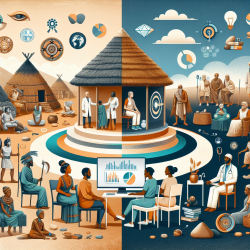Introduction
The advent of electronic medical records (EMRs) has revolutionized the way clinical and translational research is conducted. A recent study titled "Development of phenotype algorithms using electronic medical records and incorporating natural language processing" highlights the potential of EMRs in improving research outcomes through the development of phenotype algorithms. This blog post will explore how practitioners can leverage these insights to enhance their research capabilities and ultimately improve patient outcomes.
Understanding Phenotype Algorithms
Phenotype algorithms are essential tools in EMR research, allowing researchers to classify patients with specific diseases and outcomes. Traditionally, these algorithms have relied on structured data such as diagnoses or billing codes. However, the accuracy of these codes can vary, necessitating the incorporation of more comprehensive data sources.
The Role of Natural Language Processing (NLP)
Natural Language Processing (NLP) is a branch of computer science that has significantly enhanced the extraction of clinical data from narrative text notes within EMRs. By analyzing unstructured data, NLP can identify concepts and link them to standardized medical terminologies. This capability allows researchers to extract valuable insights from narrative notes, which are often rich in clinical information.
Implementing Phenotype Algorithms
To successfully implement phenotype algorithms, a multidisciplinary team is essential. This team should include clinical domain experts, biostatisticians, EMR informaticians, and NLP experts. Their collaboration ensures the development of robust algorithms that improve the sensitivity and accuracy of patient classification.
Advantages of NLP in EMR Research
- Enhanced Data Extraction: NLP provides access to data not available in structured formats, improving the overall quality of the research.
- Improved Sensitivity: Algorithms incorporating NLP have demonstrated higher sensitivity, allowing for the classification of more patients with greater accuracy.
- Comprehensive Analysis: By linking various terms to a single concept, NLP enables a more thorough analysis of patient data.
Encouraging Further Research
While the study provides a roadmap for developing phenotype algorithms, it also highlights the need for further research. Practitioners are encouraged to explore the integration of NLP and EMR data in their studies, potentially leading to groundbreaking discoveries in clinical research.
Conclusion
The integration of NLP with EMR data represents a significant advancement in clinical research methodologies. By adopting these techniques, practitioners can improve the accuracy and sensitivity of phenotype algorithms, ultimately leading to better patient outcomes. For those interested in delving deeper into the study, the original research paper can be accessed here.










